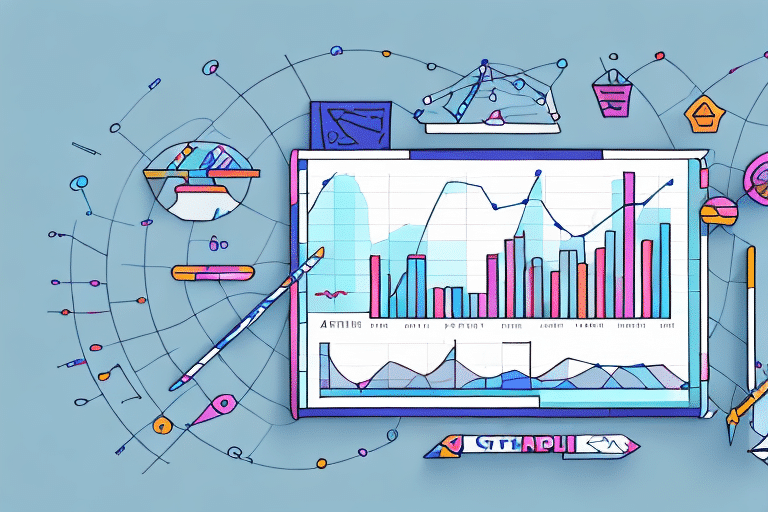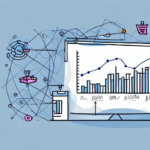Understanding the Essential Retail KPIs for Success
In today's rapidly evolving retail landscape, monitoring the right metrics is crucial for maintaining a competitive edge and achieving sustained success. Key Performance Indicators (KPIs) are invaluable tools that enable retailers to track progress, identify areas for improvement, and adapt to shifting market trends. By leveraging these metrics effectively, retailers can make informed decisions that drive growth and profitability.
Why Retailers Need to Track KPIs to Succeed
Tracking KPIs is fundamental for any retailer aiming to stay ahead in a dynamic market. KPIs allow retailers to measure their performance against industry benchmarks, highlighting areas of strength and weakness. Regular monitoring of KPIs enables retailers to detect emerging trends and patterns early, facilitating proactive measures to optimize operations. In today's highly competitive retail environment, tracking KPIs is not just beneficial—it's essential for success.
Sales per Square Foot is one of the most critical KPIs for retailers. According to the National Retail Federation, the average sales per square foot in the U.S. retail industry was approximately $300 in 2023. This metric assesses the revenue generated for every square foot of retail space, providing insights into the profitability of different store areas. By analyzing this KPI, retailers can identify high-performing sections and make informed decisions about resource allocation. For instance, if a specific section exhibits a high sales per square foot ratio, retailers might consider expanding that area or increasing inventory levels to capitalize on its success.
Customer Retention Rate is another vital KPI, measuring the percentage of customers who return to make additional purchases. A high retention rate indicates strong customer loyalty, which is crucial for sustained revenue. According to a study by Harvard Business Review, increasing customer retention rates by just 5% can lead to an increase in profits of 25% to 95%. Retailers can enhance retention by offering exclusive discounts, rewards programs, or personalized shopping experiences to their most loyal customers.
Defining Key Performance Indicators (KPIs) in Retail
KPIs are measurable values that evaluate a business's performance. In the retail sector, numerous KPIs can be tracked, including sales revenue, customer engagement, inventory turnover, and marketing ROI. Effective KPIs should be Specific, Measurable, Achievable, Relevant, and Time-bound (SMART), providing a clear and accurate depiction of business performance.
Conversion Rate is a crucial KPI that measures the percentage of visitors to a store or website who complete a purchase. This metric helps businesses assess the effectiveness of their marketing and sales strategies in converting potential customers into actual buyers. According to Shopify, the average e-commerce conversion rate is around 2.86%. By tracking conversion rates over time, retailers can identify areas for improvement and make data-driven decisions to optimize their sales funnel.
The Top 5 KPIs Every Retailer Should Track
While the retail industry offers a myriad of KPIs, some are more critical for ensuring success. Here are the top five KPIs every retailer should focus on:
- Sales Revenue: Measures the total sales generated by the business, serving as a primary indicator of financial health.
- Customer Acquisition Cost (CAC): Tracks the cost incurred to attract a new customer, helping evaluate the efficiency of marketing efforts.
- Customer Lifetime Value (CLV): Estimates the total revenue a customer is expected to generate during their relationship with the business.
- Gross Margin: Represents the percentage of revenue remaining after deducting the cost of goods sold, indicating profitability.
- Inventory Turnover: Measures how quickly inventory is sold and replaced over a specific period, reflecting inventory management efficiency.
It's important to note that while these KPIs are essential, retailers may need to track additional metrics depending on their specific business models and industry nuances. For instance, retailers operating both online and offline might track the conversion rate of website visitors turning into in-store customers. Similarly, retailers dealing with seasonal products might focus on sell-through rates to optimize inventory decisions for future seasons.
How to Identify the Right KPIs for Your Retail Business
Identifying the most relevant KPIs for your retail business involves a strategic approach. Begin by assessing your business goals and objectives, then determine which KPIs best measure progress toward those goals. It's also essential to consider the cost and feasibility of tracking each KPI, along with the data required to do so effectively.
The specific industry in which you operate plays a significant role in selecting appropriate KPIs. For example, a fashion retailer may prioritize inventory turnover and sell-through rates, while a grocery store might focus on basket size and customer retention rates. Regularly reviewing and adjusting your KPIs is crucial as your business grows and evolves. Emerging technologies and data sources can also offer new opportunities to track KPIs more accurately or efficiently, making it beneficial to reassess your KPIs periodically.
Measuring Sales Performance: Using KPIs to Boost Revenue
Sales performance remains a central focus for retail businesses. By measuring the right KPIs, businesses can identify top-performing products, sales channels, and sales personnel. Deep analysis of sales data reveals what drives growth, enabling optimization of sales strategies accordingly.
Conversion Rate is pivotal in understanding how effectively a website or store converts visitors into customers. Enhancements in the checkout process or product descriptions can significantly impact this metric. Additionally, tracking Customer Lifetime Value (CLV) helps identify the most valuable customers, allowing businesses to tailor marketing efforts to retain and maximize revenue from these clients.
Setting clear, relevant goals and tracking associated KPIs allow businesses to make data-driven decisions that enhance sales and revenue. For example, focusing on average order value or repeat purchase rates can provide actionable insights aligned with specific business objectives.
Tracking Inventory and Supply Chain Efficiency with KPIs
Effective inventory and supply chain management are critical to retail success. KPIs such as Inventory Turnover, Lead Time, and Stock-out Rates provide insights into inventory management efficiency. According to the Investopedia, a higher inventory turnover indicates strong sales performance and efficient inventory management. These metrics help determine optimal stock levels and timing for replenishments, reducing excess inventory and minimizing stockouts.
Monitoring supply chain KPIs like On-time Delivery, Order Accuracy, and Transportation Costs identifies operational inefficiencies and bottlenecks. Addressing these issues can lead to cost savings, improved customer satisfaction, and a more streamlined supply chain overall.
Customer Engagement and Satisfaction: Measuring Retail Success
Customer engagement and satisfaction are paramount in the retail industry. KPIs such as Customer Lifetime Value (CLV), Net Promoter Score (NPS), and Customer Churn Rate offer insights into customer satisfaction levels, helping businesses identify and address potential issues. A study by Bain & Company found that customers who are highly satisfied are more likely to recommend the brand to others, directly influencing revenue growth.
Implementing robust customer feedback systems—such as surveys, feedback forms, or social media monitoring—enables businesses to gather valuable insights. Responding to customer feedback demonstrates that a business values customer opinions, fostering trust and loyalty. These practices contribute to enhanced customer engagement and provide actionable data for continuous improvement.
Analyzing Marketing Efforts with KPIs: Measuring ROI and Impact
Marketing is a critical driver of retail success, but measuring its impact can be complex. KPIs like Cost per Acquisition (CPA), Conversion Rate, and Return on Investment (ROI) are essential for evaluating the effectiveness of marketing campaigns. According to Marketing Evolution, businesses that optimize their marketing ROI can see significant improvements in their bottom line.
However, it's important to consider additional factors such as brand awareness, customer loyalty, and overall customer satisfaction. While these may not directly influence ROI, they contribute to long-term business growth and sustainability.
Using Data Analytics to Improve Retail Operations with KPIs
Data analytics is a powerful tool for accurately tracking and analyzing retail KPIs. It enables businesses to collect and interpret vast amounts of data, uncovering trends and patterns that inform strategic decision-making. Advanced data analytics, including predictive analytics and machine learning, provide deeper insights into customer behavior, sales trends, and operational efficiency.
By leveraging data analytics, retailers can make proactive adjustments to their operations, enhancing performance and maximizing profitability. The integration of data-driven strategies ensures that business decisions are grounded in factual, actionable information, leading to better outcomes and sustained growth.
Common Challenges Faced by Retailers When Implementing KPIs
Implementing KPIs in retail can present several challenges, particularly for small and medium-sized businesses. Common obstacles include:
- Choosing the Right KPIs: Selecting metrics that accurately reflect business goals and provide actionable insights.
- Dealing with Unreliable Data: Ensuring data accuracy and consistency across different sources and systems.
- Managing Employee Resistance: Overcoming reluctance to change and ensuring staff buy-in for KPI tracking initiatives.
These challenges can be mitigated through careful planning, the use of robust data analytics tools, and clear communication strategies that engage and inform all stakeholders.
Best Practices for Setting and Achieving Retail KPI Targets
Establishing effective KPI targets is essential for driving business performance. Best practices include:
- Setting SMART Targets: Ensure that KPI targets are Specific, Measurable, Achievable, Relevant, and Time-bound.
- Aligning KPIs with Business Goals: Ensure that all KPIs support the overarching objectives of the business.
- Regular Monitoring and Review: Continuously track KPI performance and adjust targets as needed.
- Data-Driven Decision Making: Use KPI data to inform strategic decisions and operational adjustments.
By adhering to these best practices, retailers can effectively set and achieve KPI targets that drive growth and improve overall business performance.
Tools and Technologies for Tracking and Analyzing Retail KPIs
A variety of tools and technologies are available to assist retailers in tracking and analyzing KPIs. These range from basic spreadsheets and calculators to sophisticated data analytics platforms and predictive analytics tools. Key options include:
- Spreadsheets: Suitable for small businesses with limited KPI tracking needs.
- Business Intelligence (BI) Software: Provides advanced data visualization and reporting capabilities, such as Tableau and Power BI.
- Retail Management Systems: Integrated platforms like Shopify and Oracle Retail offer comprehensive KPI tracking and analysis features.
- Predictive Analytics Tools: Utilize machine learning algorithms to forecast future trends and performance, such as SAS Predictive Analytics.
Choosing the right tools depends on the specific needs and goals of the business. While advanced tools offer greater functionality, it's important to consider factors such as cost, ease of use, and scalability to ensure the selected solutions align with business requirements.
The Future of Retail: Predictive Analytics, AI, and Advanced KPI Tracking
The retail industry is continuously evolving, with emerging technologies poised to transform how businesses track and measure performance. Predictive analytics, artificial intelligence (AI), and machine learning are set to revolutionize KPI tracking by providing deeper insights and more accurate forecasts. These technologies enable retailers to anticipate market trends, personalize customer experiences, and optimize operations with unprecedented precision.
According to a Forbes article, the integration of AI in retail is expected to boost sales by up to 20% through enhanced customer targeting and inventory management. As these technologies mature, they will become increasingly essential for retailers seeking to maintain a competitive advantage.
By integrating advanced KPI tracking mechanisms, businesses can unlock new opportunities for growth and efficiency, ensuring long-term success in the ever-changing retail landscape. With the right KPIs and robust tracking mechanisms in place, retailers can gain meaningful insights into their operations and optimize performance for sustained growth. Continual monitoring, assessment, and data-driven decision-making empower retailers to stay relevant in a fiercely competitive market and drive their businesses forward.




















